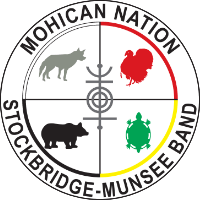Section ENV.06.03 — Definitions
(a) "Aquifer" is a saturated, permeable, geologic formation of soil or rock that contains and will yield groundwater.
(b) "Best Management Practices" (BMPs) refers to measures, either managerial or structural, that are determined to be the most effective, practical means of preventing or reducing pollution.
(c) "Community Water Supply Well" is a public water supply well that serves 15 or more service connections used by year-round residents or regularly serves at least 25 year-round residents.
(d) "Groundwater" is the water that exists beneath the land surface, but more commonly is the water in an aquifer.
(e) "Non-community Water Supply Wells" are public water supply wells that do not qualify as community water supplies. Non-community water supply wells are divided into two categories:
(1) A non-transient non-community water supply regularly serves at least 25 of the same people over six months per year.
(2) A transient non-community water supply serves all other non-community water supply systems.
(f) "Person" refers to any and all persons and parties, including individuals, corporations, partnerships, other organizations or governmental entities.
(g) "Private Sewage System" is a sewage treatment and disposal system serving a single structure that has a septic tank and soil absorption field located on the same land parcel as the structure. This term also means an approved alternative sewage system, including a substitute for the septic tank or soil absorption field, a holding tank, a system serving two structures or a system located on a different parcel than the structure.
(h) "Private Well" is any well that provides water for human consumption and is not considered a public water supply well.
(i) "Privy" is a building or structure above a buried container or above an unlined excavation used for the deposition of human waste.
(j) "Public Water Supply Well" provides drinking water for human consumption to 15 or more service connections or to an average of at least 25 individuals daily at least 60 days per year. A public water supply well is either a 'community' or 'non-community' water supply well.
(k) "Recharge Area" means the areas or features that supply groundwater to a well through the surface infiltration of water.
(l) "Safe Drinking Water Act" (SDWA) refers to the Safe Drinking Water Act of 1974, as amended, 42 U.S.C. § 300f et seq., and the regulations adopted under the SDWA.
(m) "Time of Travel" (TOT) is the distance that groundwater will travel in a specified time. In this Ordinance, it refers to the time that it takes groundwater and potential contaminants to reach a pumping well(s) from an area within the aquifer that is up-gradient from the well(s).
(n) "Wastewater" means any water carrying waste materials, except clear water wastes, created in and conducted away from residences, industrial establishments and public buildings.
(o) "Well" means any drillhole or other excavation or opening that is deeper than it is wide and extends more than 10 feet below the ground surface for the purpose of obtaining groundwater.
(p) "Wellhead Protection Area" (WHPA) is the surface and subsurface area around a well, through which contaminants are reasonably likely to move toward and reach that well within a given time frame.
